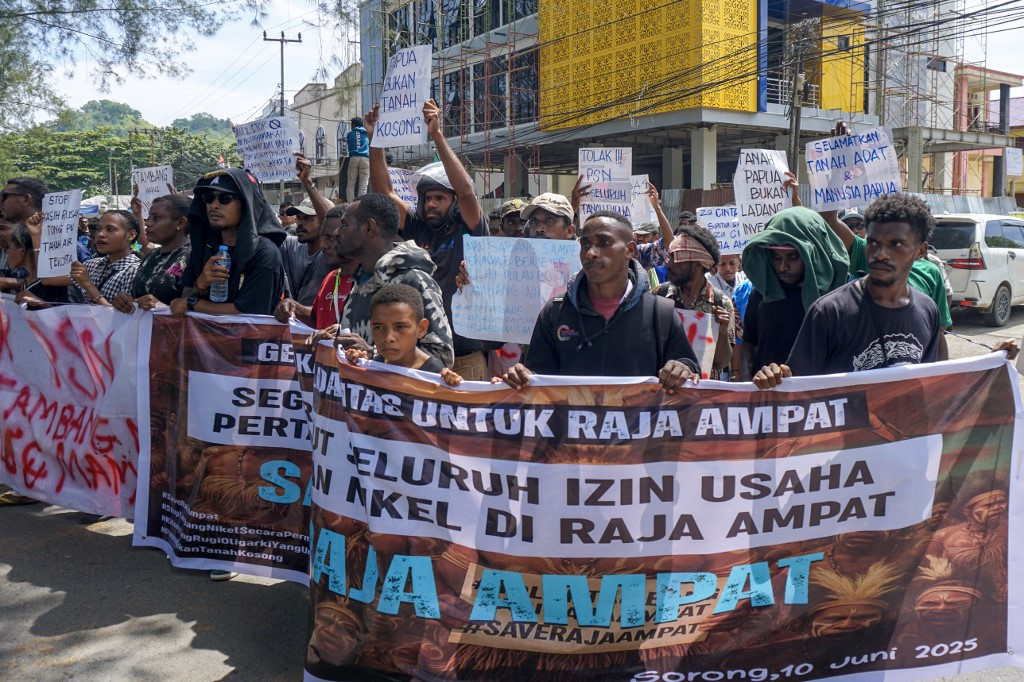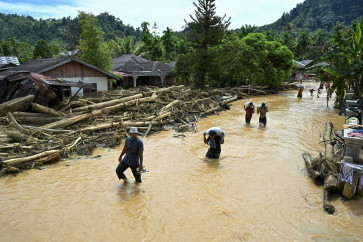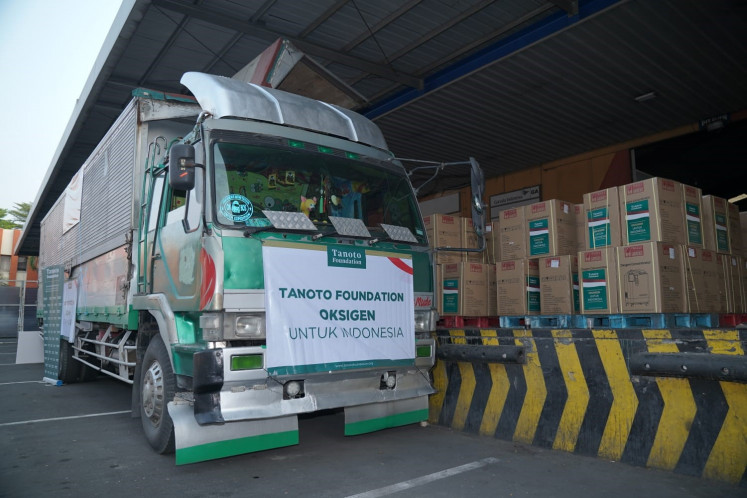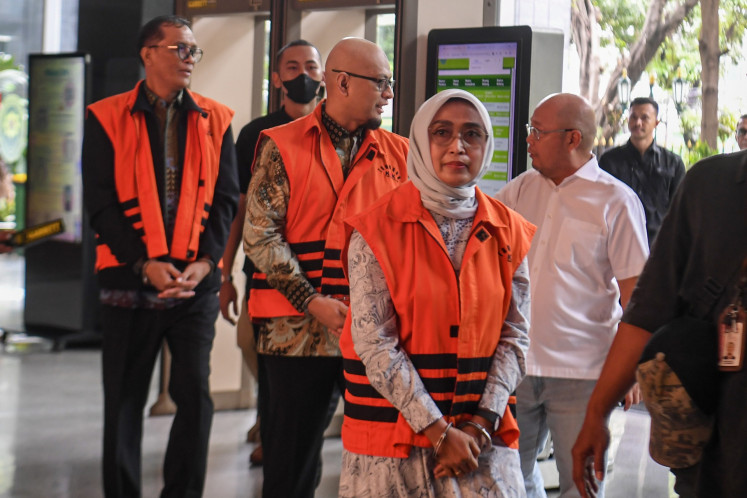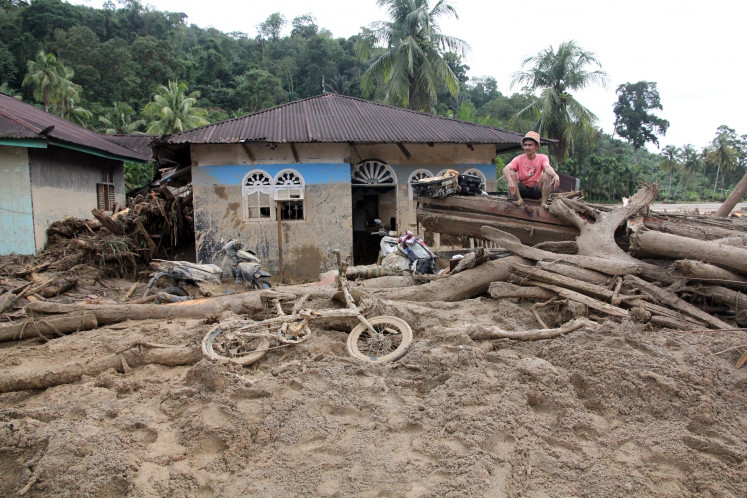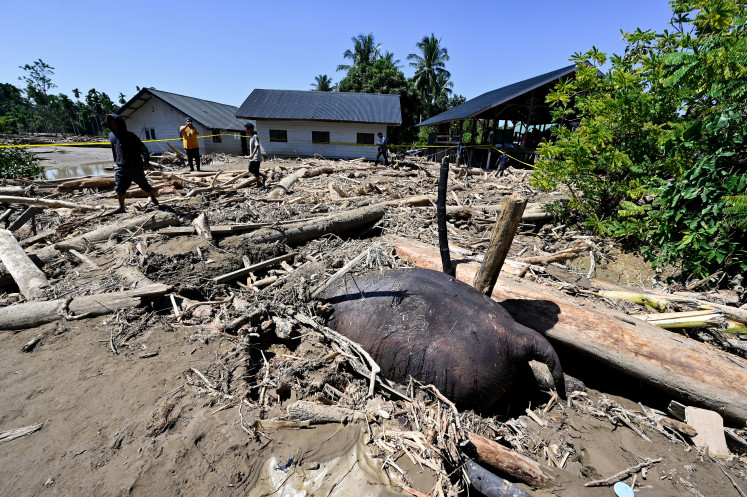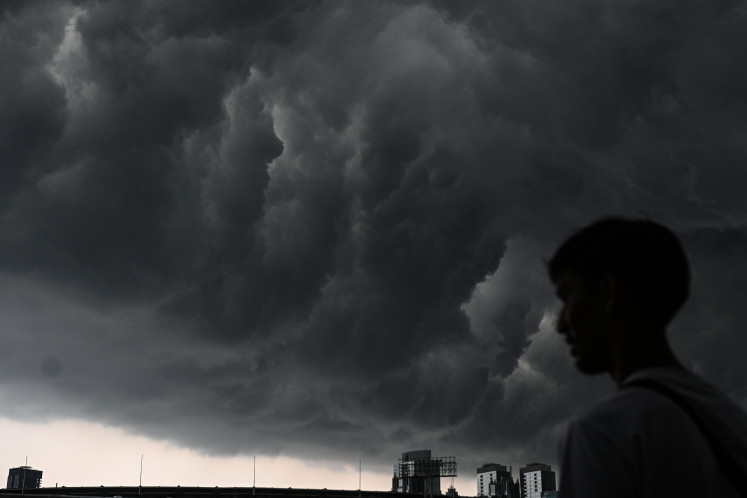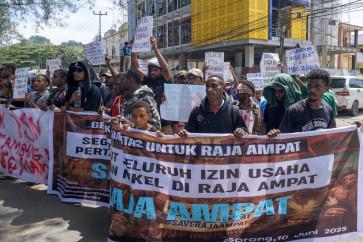Popular Reads
Top Results
Can't find what you're looking for?
View all search resultsPopular Reads
Top Results
Can't find what you're looking for?
View all search resultsWhen referee becomes player: Conflicts of interest in Indonesia’s nickel rush
Several ministers, provincial leaders and political elites are known to have deep financial ties to nickel mining interests.
Change text size
Gift Premium Articles
to Anyone
I
ndonesia’s nickel industry has become a cornerstone of the country’s industrial strategy, supplying critical minerals for electric vehicle batteries and energy transition technology.
But behind the promise of green growth lies an uncomfortable truth: Unchecked mining practices are degrading fragile ecosystems, displacing local communities and revealing a web of institutional conflicts of interest that continuously threaten the country’s environmental governance.
The environmental harm caused by the mining industry stems largely from poor governance, but it is not irreversible. The root of the problem seems to lie in the increasingly blurred line between regulators and the regulated.
It is no secret that influential political and business elites often hold dual roles as both policymakers and corporate stakeholders in the mining sector. This fundamental conflict of interest undermines the government’s ability to enforce environmental safeguards, creating a system where accountability is diluted and corruption thrives.
Nickel production in Indonesia is growing at an extraordinary pace. The country now controls more than 50 percent of the global supply, and according to a 2024 report by the International Energy Agency, its output is set to double by 2030. Yet much of this growth has come at a devastating cost.
In Southeast Sulawesi, communities on the small islands of Kabaena, Wawonii, Gebe face polluted waterways, heavy metal contamination and the loss of traditional fishing grounds. In North Maluku, an investigation by the OCCRP, Gecko Project and Deutche Welle revealed that Harita Group continued operations despite evidence that its nickel smelter contaminated water sources with carcinogenic chromium-6, which severely violates World Health Organization standards and Indonesian law.
Raja Ampat in Southwest Papua, one of the world’s most biodiverse marine regions, has also come under threat. Mining permits were issued for several small islands, including Gag Island, even though these areas are part of a UNESCO Global Geopark and legally protected under Law No. 1/2014 on small islands management and Constitutional Court Decision No/ 35/PUU-XX/2023, which explicitly prohibit mining on small islands due to their ecological sensitivity.

